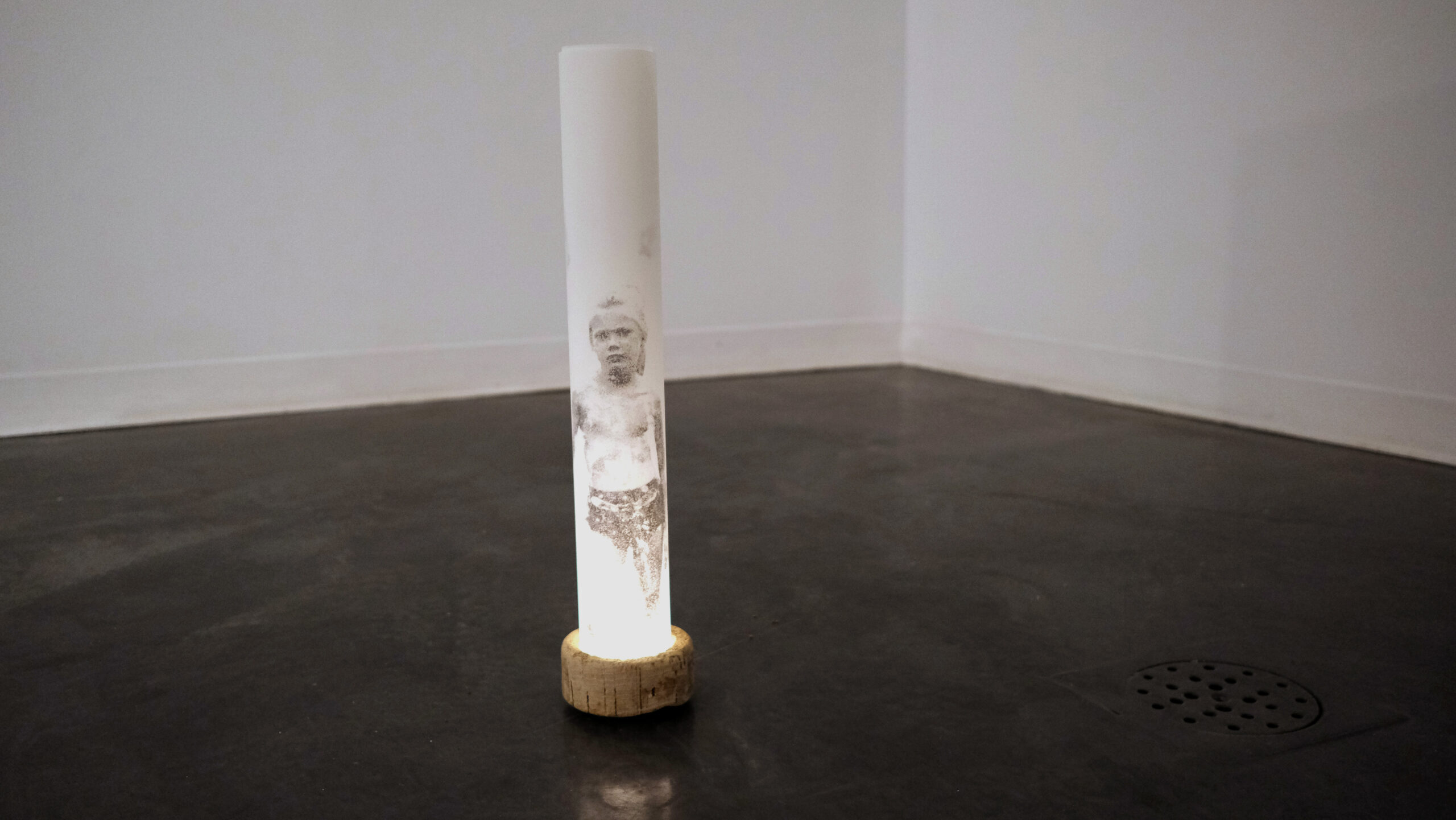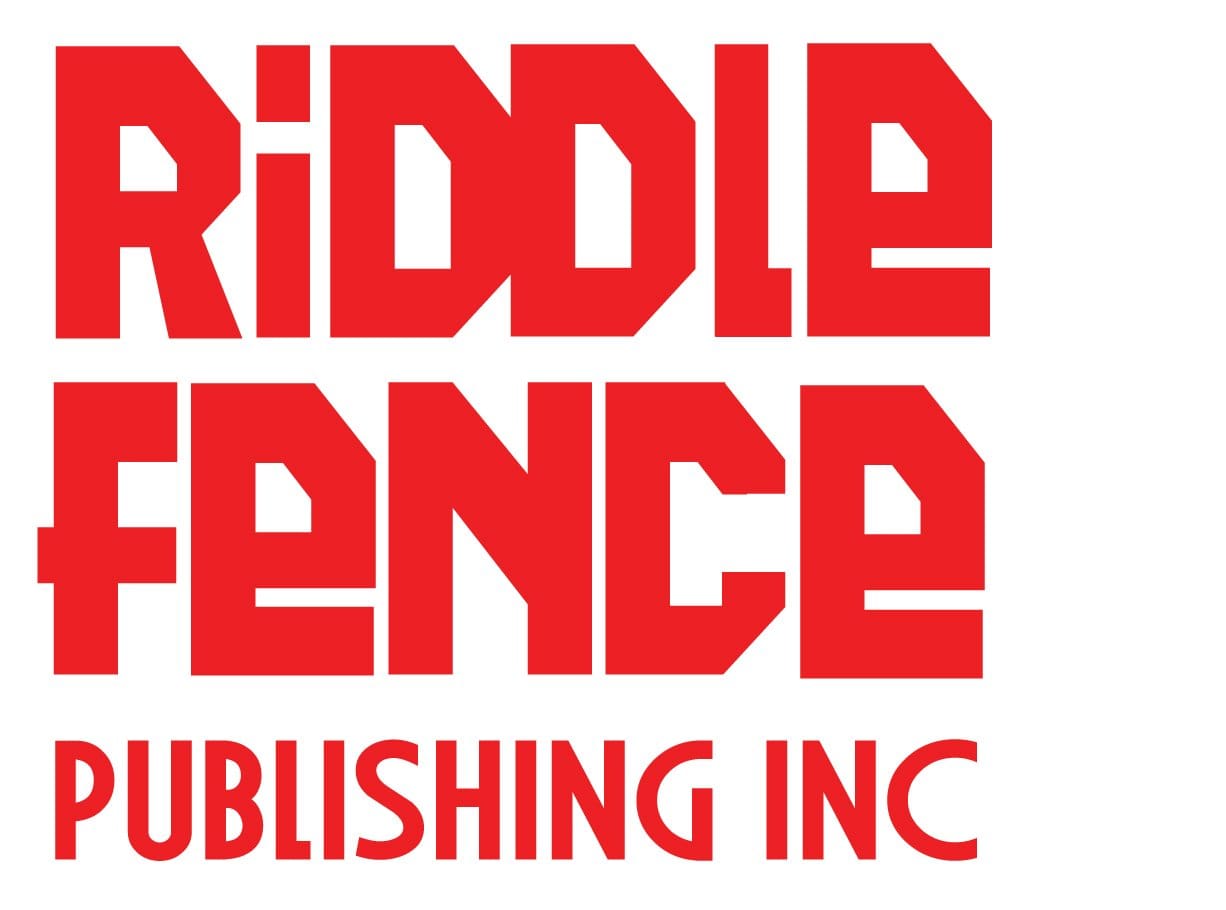Transient Maternal
Daze Jefferies and B.G-Osborne
Eastern Edge Gallery March 29-May 11, 2024
Reviewed by Rhea Rollman
For Daze Jefferies and B.G-Osborne, grief is a gift. It’s one they’d like to help you rethink.
“It stays with you forever, it never goes away,” says Osborne, who lost their birth mother (Joan) when they were three years old. “It’s something you grow around.”
“We really bonded through grief, but a loving grief,” adds Jefferies. The two met at the Moving Trans History Forward conference in 2021, and Osborne moved to NL later that year.
“Our connection has made us feel like it’s okay to sit in grief,” explains Jefferies. “And to make art about grief. So…grief is a gift as well.”
It’s one that lies at the heart of Transient Maternal, their collaborative exhibition now showing at Eastern Edge Gallery.
There are recurring elements through which these themes of grief and love manifest; primal energies serving as conduits for the feelings brought here to form. Water and fire are two of these. Water represents outmigration for Jefferies (who works with fabrics washed ashore on the beach) and maternal memories for Osborne (who grew up on the same Balsam Lake in southern Ontario as their mother, dipping toes in the very same waters). Photographic stills and video recordings share these watery memories, but they hold material presence too in the form of reclaimed materials from the ocean (driftwood, fabrics, organic matter).

Daze Jefferies and B.G-Osborne, Transient Maternal exhibition detail, photo by Laura Sbrizzi
Fire is important too. When Osborne’s mother was undergoing chemotherapy treatments before her death she had hallucinations about fire, and Osborne has also hallucinated the sensation of smoke and burning throughout their life. The exhibit features a triptych of drawings framed with charred wood; there are also images projected onto charred woodcuts. Piles of charcoal lie inside ceramic vessels. But fire and water merge, as do the artists’ conceptual material: the charcoal and burnt wood they use washed ashore and was gathered by the artists from the landwash. Here too is a gift: an offering shaped by the hand of both fire and water.
Mermaid’s purses play a prominent role in the show: a jar of them lies atop a charred wooden plinth. The egg-sacs prominent on Newfoundland beaches speak as well to maternal absence: the mother ejects them from her body, leaving the fish to grow up and survive on their own. But the casing is a durable collagen: a final gift to both embryos and artists.
“For me the mermaid’s purse becomes this archival fragment, this imagined trace of that maternal relationship,” reflects Jefferies. “There is a missing-ness there.”
Osborne lost their mother at age three, but shrugs at the condolences of strangers. “She’s clearly still around. Her energy – she’s here.” For her part, Jefferies has sought the trans foremothers she never had, their absence a product of outmigration, diaspora, a need to escape both the island and the archive. But the lessons of grief remind us that transience and absence are never absolute – fittingly symbolized by the mermaid’s purse.
“These mothers leave, but their presence remains,” reflects Jefferies.
Themes and memories wrap around each other in this show, merging like saltwater and fresh. That point where they merge fascinates Jefferies. “Estuary” is the scientific term for that meeting point, and the title of a low table in Transient Maternal cut in the shape of Balsam Lake. But there is a hole in its centre, evocative of the mermaid’s purse, and maternal absence.
Jefferies and Osborne’s initial plan was to produce sculptures using latex, silicone and fibreglass mould-making, “but something was lost through that process of working with toxic materials,” explained Osborne. “It was just such a disconnect.”
Those materials are also carcinogenic, a fact not lost on Osborne, whose mother died of cancer. After making an initial fibreglass mould for a large sculptural piece, “I attempted to cast some silicone for an egg-sac-like shape, but nothing worked in a way that felt right. So [Jefferies] started coating the fibreglass mould with wax. We went back to wax and fabrics and charcoal, more natural materials. It felt right.”
“It was a learning process,” reflected Jefferies. “Learning what materials serve the work, and what materials don’t.”
The two artists consider their work to be a collaboration with Osborne’s mother, working with artifacts and archives of her life, expressing them through materials and forms that were important to her. It incorporates video and sound installations (including recordings of Joan), along with textile works which were an arts practice Jefferies inherited from her own grandmother.
“We have both inherited an artistry from these important maternal figures in our life,” adds Jefferies. “The work that we’re doing now, both independently and collaboratively, is nurtured by those bonds [and] how to honour that kind of relationship, and hold up rural women who might otherwise be overlooked.”
There is a profound sense of love underpinning this show, and it emerges in varied forms. One theme the two explore is “T4T tenderness.” Working together as trans artists has provided a collaborative closeness that might not otherwise have been possible.
“T4T love has completely changed my life,” says Jefferies. “I think we’ve needed each other in order for this work to come into being. Having these shared experiences of gender transition from rural places, and wanting to honour water and to clearly connect over our relations with mother figures, guides a lot of the work. But it comes from that love and trust that we have with each other. Before this point I didn’t feel I had anyone who could understand or grasp the weight of the work in a similar way. Our encounter and our bond as trans partners opens up the possibility of the work for me.
Jeffries says, “There’s safety in our relationship that allows us to work through some of these questions about love and loss and grief and giving.”
Art never exists in a vacuum, and the fraught present lends work such as this a heightened political importance. It’s rooted in memory and in the past, yet points toward the future. As always, Jefferies observes, “you bring your own desire into the work, but the work shows you what it needs.”
“In this moment, trans love and expressions of trans love are necessary,” she says. “I felt alone in a lot of my expressions of grief and love for trans women through time, for these foremother figures, and it’s been a joy to share that similar kind of emotional relationship through this bond [with Osborne].”
But joy by itself is not enough, she points out.
“I feel like in contemporary art, right now everything revolves around joy and resistance. Which is also necessary and urgent…but I think grief is stigmatized. So in this moment, showing trans embodiments of love and grief for what they are has meant something special to us.”
Rhea Rollmann is an award-winning journalist, writer and audio producer based in St. John’s, NL, and is the author of A Queer History of Newfoundland (Engen Books, 2023). She’s a founding editor of The Independent NL and her journalism has appeared in Briarpatch Magazine, CBC, Xtra Magazine, Chatelaine, PopMatters, Riddle Fence and more. Her work has garnered three Atlantic Journalism Awards and she’s a two-time Canadian Association of Journalists’ awards finalist. She also has a background in labour organizing and queer/trans activism, and is Program Director at CHMR-FM, a community radio station in St. John’s, NL.
